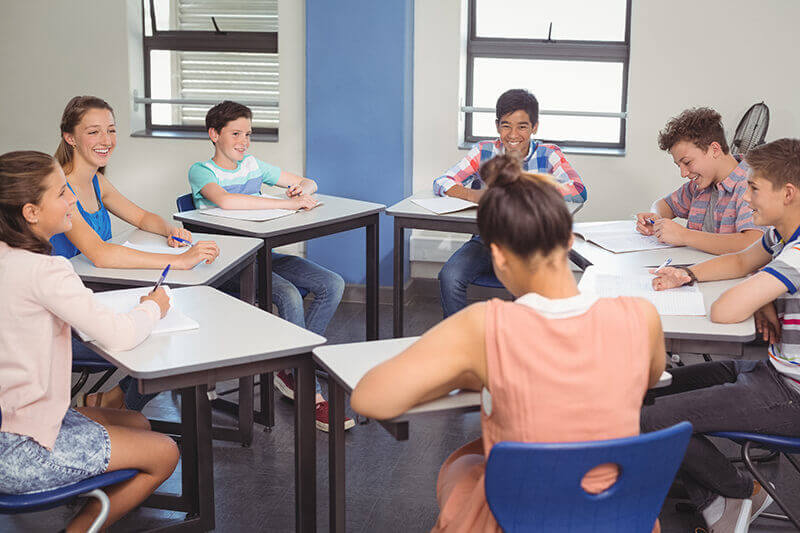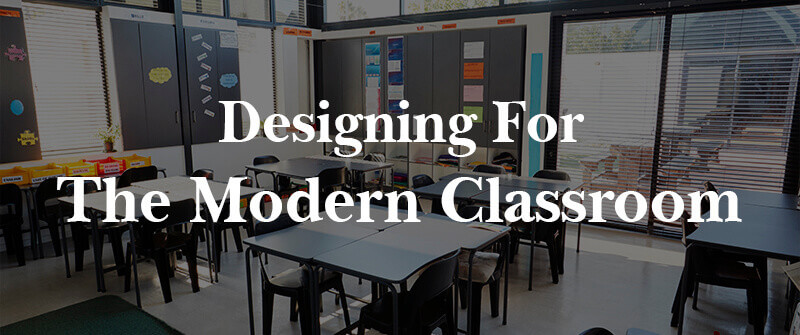How much has the average 21st century classroom changed from its 19th century counterpart? Old schoolhouses featured long rows of seats facing a teacher’s desk and chalkboard from where the lesson was taught. Swap the chalkboard for a whiteboard, and it’s a fairly recognizable setup to the modern reader. Surely it’s time the design world moved on, education certainly has. Teachers today are incorporating active learning strategies into the classroom – strategies that create a more student-centered and collaborative learning environment (as opposed to simple lecturing). The design world has similarly changed to help create educational spaces which support modern teaching styles.
Wibbly Wobbly
One of the key characteristics of active learning is movement. Anyone who’s been around small children can tell you that getting them to sit still for even 5 minutes can be an epic battle. Fighting that battle with 20 children while also trying to teach them multiplication tables isn’t exactly the most productive learning session. And this isn’t just an issue with elementary school kids! There’s a reason that standing desks, ball chairs and other alternative seating is so popular in office spaces – human beings are meant to move.
Designers have begun to address this difficulty through fidget enabling furniture. These include plastic wobble stools, wiggle cushions and rockers. They promote movement, helping kids release energy and get the extra sensory input many children need to keep focused – not only improving their own learning experience, but also decreasing disruptions which distract their classmates.
Variety is The Spice of Life
While an effective solution for many students, not every child can handle the high level of sensory input of fidget furniture. Soft seating, stand up and kneeling desks, as well as seating with tactile features for a milder sensory input are additional options available, all of which provide a more comfortable alternative to traditional hard plastic chairs.
With such a wealth of options to choose from, variety is key. Acknowledging the different needs students have is key to creating a learning environment that supports everyone in it. Furthermore, offering your students choices gives them greater agency and supports a more student-centered space where they are more actively involved.

Using Space Thoughtfully
It’s not just the furniture that should be flexible, it’s the space. A classroom embracing active learning is moving on from the model of the teacher lecturing from the front of the room as each student stares back from their individual desks. Rather, any school day should be filled with a variety of activities and types of learning. You may start with independent reading, move onto small group work, then have children edit each others’ essays in pairs.
Moving from collaborative to individual activities – or accommodating a mix of both at the same time – can be an easy task if the classroom is designed right. Furniture that is easily reconfigurable is a valuable addition. Modular desks that combine and separate, or easily moved tables on rollers allow students to change their workspaces from individual to collaborative easily.
Making use of the entire classroom is critical to creating a variety of collaborative and individual zones. Wall space can be a great deal more functional than as merely a place to hang posters. Dry-erase and magnetic dry-erase wall coverings can transform class walls from floor to ceiling into the perfect space for even large groups to collaborate – and the chance for students to getup from their desks and move around or stand while working.
Biophilic Design
This is not the first (nor likely the last time) I’ve championed incorporating biophilic design. It’s becoming a beloved guiding principle in office design due to its many research-proven positive effects on employees, including higher productivity, lower stress levels – even improved overall sleep and health. In the classroom, the use of biophilic design has been linked to better attendance, increased focus and improved overall academic performance.
Using clear glass instead of darkly tinted glass takes advantage of natural light and its many health benefits as well as provides views to the outdoors. If the space is lacking many windows, using natural materials such as wood as well as organic shapes when choosing furniture and creating a built space is another way of introducing aspects of the natural world inside. Natural textures not only provide a connection to the outdoors, but also provide sensory stimulation which helps many students focus better.
To Conclude
Improving students’ focus and comfort, making collaboration easy, and promoting movement are all goals of classroom design that support an active learning environment. Flexible furniture, reconfigurable spaces, and biophilic elements are just a few areas designers consider when creating an optimal space for students. But that’s just the start! We’ve gone over just a few starting points, but schools are changing quickly. At the very least we can say a long awaited goodbye to the old fashioned schoolhouse model.

